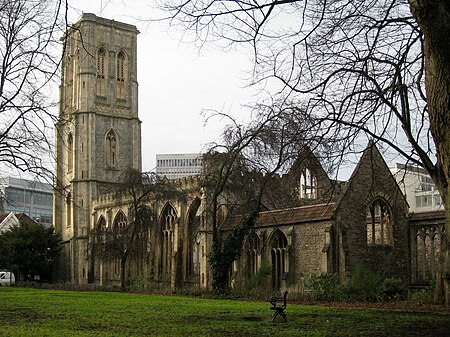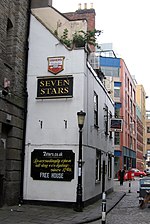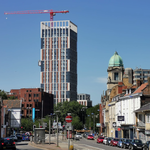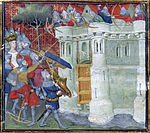Temple Church, Bristol

Temple Church, also known as Holy Cross Church, (grid reference ST5972) is a ruined church in Redcliffe, Bristol, England. It is on the site of a previous, round church of the Knights Templar, which they built on land granted to them in the second quarter of the 12th century by Robert of Gloucester. In 1313 the Knights Hospitaller acquired the church, following the suppression of the Templars, only to lose it in 1540 at the time of the Dissolution of the Monasteries. By the early 14th century, the church served as the parish church for the area known as Temple Fee. From around the same time, the rebuilding of the church on a rectangular plan started. This was completed by 1460, with the construction of a leaning west tower. The church was the scene of the exorcism of George Lukins conducted by Methodist and Anglican clergy in 1788.The church was bombed and largely destroyed in the Bristol Blitz. It is a Grade II* listed building, owned by the Diocese of Bristol. In 1958, English Heritage agreed to undertake a guardianship role. A 1960 excavation by the Ministry of Works discovered the plan of the 12th-century church, enabling it to be marked out on the ground in stone.
Excerpt from the Wikipedia article Temple Church, Bristol (License: CC BY-SA 3.0, Authors, Images).Temple Church, Bristol
Petticoat Lane, Bristol Redcliffe
Geographical coordinates (GPS) Address External links Nearby Places Show on map
Geographical coordinates (GPS)
| Latitude | Longitude |
|---|---|
| N 51.452 ° | E -2.587 ° |
Address
Temple Church (Holy Church;Holy Cross)
Petticoat Lane
BS1 6DE Bristol, Redcliffe
England, United Kingdom
Open on Google Maps










